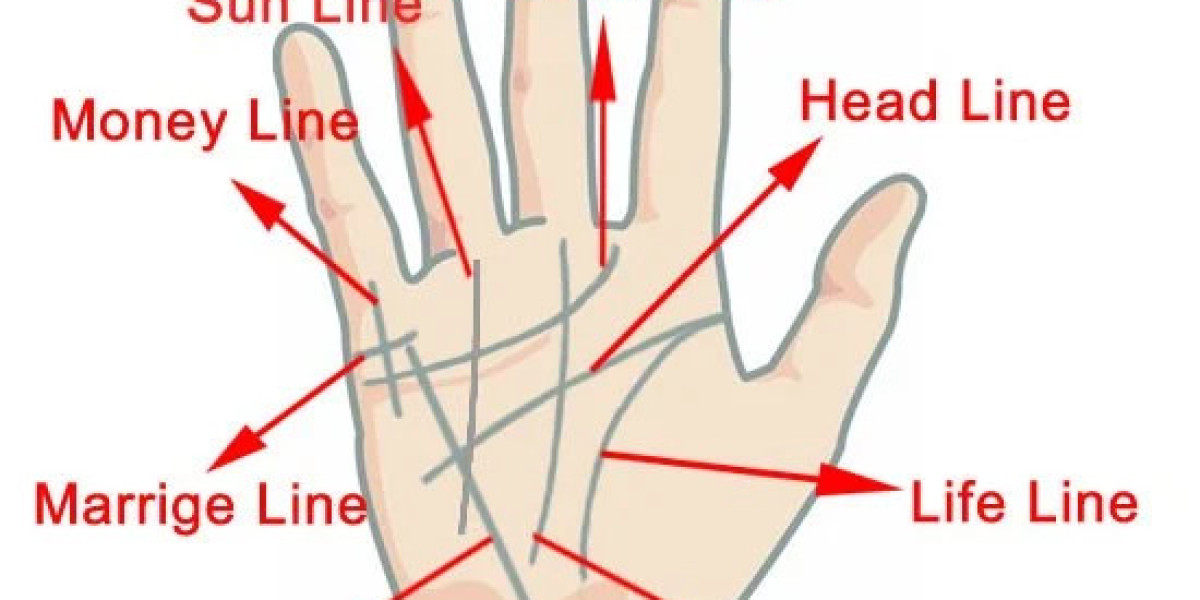Palmistry, also known as chiromancy, is the practice of interpreting the lines, shapes, and mounts on a person's hands to gain insight into their personality, life experiences, and future potential. While palmistry is often associated with fortune telling, it is much more than just predicting the future—it's a method of self-reflection and understanding that has been practiced for thousands of years across cultures. In this blog post, we’ll explore what palmistry is, how it works, and how you can begin to understand the art of reading palms.
The Origins of Palmistry
Palmistry has ancient roots, with its origins traced back to several ancient civilizations, including the Egyptians, Greeks, and Indians. Early palmistry practitioners believed that the lines on a person's hands reflected their character, emotional state, and potential life path. Over the centuries, palmistry evolved into a more sophisticated system that was used by many spiritual and philosophical traditions.
Today, palmistry is practiced around the world, with different cultures offering their interpretations of hand reading. While the techniques and systems can vary, the core principles of palmistry remain largely the same.
The Basics of Palmistry
When you look at your hand, palmists typically focus on the following aspects:
The Shape of the Hand: The overall shape of the hand can offer insights into a person’s temperament and basic character. There are generally four hand shapes that correspond to the elements:
- Earth Hands: Square palms with short fingers, indicating practicality, stability, and a grounded nature.
- Air Hands: Square or rectangular palms with long fingers, showing intellectualism, communication, and analytical thinking.
- Water Hands: Long palms with long fingers, suggesting sensitivity, intuition, and emotional depth.
- Fire Hands: Square or rectangular palms with short fingers, indicating energy, confidence, and a dynamic personality.
The Lines on the Palm: Palmists examine the lines on the palm to understand a person’s life journey. The major lines include:
- The Heart Line: This line curves along the top of the palm and is associated with emotions, love, and relationships. A deep heart line suggests strong emotional expression, while a shallow one may indicate emotional restraint.
- The Head Line: Running horizontally across the palm, this line relates to intellect, decision-making, and mental approach. The length and curve of the head line reveal how a person thinks and processes information.
- The Life Line: Perhaps the most well-known line, the life line curves around the base of the thumb and traces a path down the palm toward the wrist. It is often associated with physical vitality, general well-being, and significant life events. Contrary to popular belief, it doesn’t predict the length of one's life but rather provides insights into one's overall health and life experiences.
- The Fate Line (if present): This vertical line runs through the center of the palm and is often linked to destiny, major life changes, and the impact of external forces. Not everyone has a fate line, and its presence or absence can hold significance in readings.
The Mounts: These are raised, fleshy areas at the base of the fingers and the palm. They are named after the planets and are thought to represent different qualities:
- Mount of Venus (base of the thumb): Passion, sensuality, and love.
- Mount of Jupiter (beneath the index finger): Ambition, leadership, and self-confidence.
- Mount of Saturn (beneath the middle finger): Responsibility, introspection, and wisdom.
- Mount of Apollo (beneath the ring finger): Creativity, artistic talent, and charisma.
- Mount of Mercury (beneath the little finger): Communication skills, wit, and intelligence.
Finger Shapes and Lengths: The length and shape of the fingers can also provide insight into a person’s personality. For example:
- Long Fingers: Typically indicate a detail-oriented, methodical, and analytical mind.
- Short Fingers: Can suggest a more action-oriented, impulsive, and spontaneous individual.
How Palmistry Works
Palmistry operates on the belief that the hands reflect a person's character, emotions, and potential. While the practice isn’t considered a science, it is viewed by many as a form of art and self-discovery. By carefully examining the lines, mounts, and shapes on the hands, a palmist looks for patterns that can indicate tendencies, challenges, and strengths in a person’s life. These patterns can evolve over time, suggesting that the hands may change as a person grows and experiences new life events.
Read Also: Wall Clock as per Vastu
Here’s how palmists typically go about reading palms:
- Look for patterns: Palmists will begin by assessing the overall shape and structure of the hands to get an initial sense of the person’s character. Then, they analyze the major lines and mounts to find specific meanings.
- Interpret the lines: Each line holds a different significance, and its depth, length, and shape can tell a different story. A well-defined, clear line might indicate strength in that area, while a broken or shallow line could suggest challenges or blockages.
- Consider the mounts and fingers: These features add further layers to the reading, with the mounts showing emotional and personality traits, while the fingers reveal how a person interacts with the world.
Palmistry as a Tool for Self-Reflection
One of the most valuable aspects of palmistry is its ability to help individuals understand themselves better. Through a palmistry reading, you can gain insights into your emotional patterns, cognitive style, and potential life paths. While palmistry is often used for divination, it can also be seen as a tool for introspection—helping you identify areas of strength, weaknesses, and opportunities for growth.
Whether you are seeking a deeper understanding of your own personality or are simply curious about the ancient art of hand reading, palmistry can provide valuable insights. However, like any tool for self-exploration, it is important to approach it with an open mind and a healthy dose of skepticism.
How to Get Started with Palmistry
If you’re interested in learning more about palmistry, there are a few steps you can take to start practicing on your own:
- Study the basics: Begin by familiarizing yourself with the fundamental lines, mounts, and hand shapes. Books, online resources, and palmistry guides are a great place to start.
- Observe your own hands: Take time to carefully study the lines, mounts, and shapes on your hands. Practice interpreting the different features and see how they align with your personality and life experiences.
- Practice with others: Once you feel comfortable with your understanding of palmistry, offer to read the palms of friends and family. Palmistry is a skill that improves with practice, so the more you apply it, the better you’ll become.
- Keep an open mind: Palmistry is not an exact science, so keep an open mind and be patient with your learning process. Each hand tells a unique story, and there are many ways to interpret the signs.
Read Also: North Facing House Vastu
Conclusion
Palmistry is an ancient practice that offers fascinating insights into the character and potential of individuals. Whether you're looking for a way to better understand yourself, gain clarity on a particular situation, or simply explore an ancient art form, palmistry provides a unique window into the soul. By studying the shapes, lines, and mounts of the hand, palmists can uncover patterns that reflect a person's past, present, and potential future. It’s a practice that has endured for thousands of years, and its relevance continues to captivate those seeking wisdom and self-awareness.








